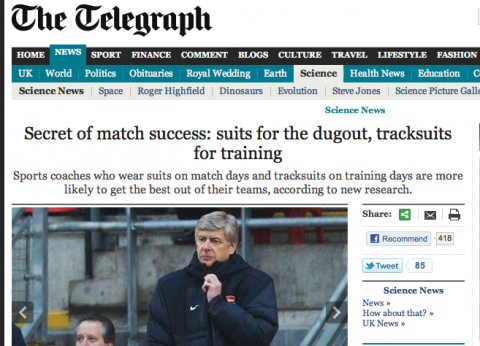The babel fish Dilemma: talking science to non-scientists.

Science communication is a field fraught with difficulty, and one which the media has a poor track record on. On 20 April Dr Brian Hughes of NUI Galway gave a talk to the Irish Sceptics Society on the problems faced in communicating scientific research in a way that's both accurate and comprehensible. By John Holden.
Here’s the dilemma: how do you communicate complex information fraught with jargon in a straightforward way to a scientifically illiterate audience without losing relevant or crucial parts of the story? Or, how do you explain something difficult in an easy way? This question has dogged the relationship between science and the media for a long time. Biological psychologist Dr Brian Hughes of NUI Galway came to Dublin on 20 April for a talk organised by the Irish Sceptics Society to try and make sense of it all.
Anyone familiar with the Hitchhiker’s Guide to the Galaxy will have heard of the babel fish. This tiny sea creature is placed inside the human ear and allows the person to understand any language spoken to them. A useful tool no doubt, but no more so than when communication breaks down in our own language, something which happens frequently in the minefield that is scientific journalism.
The first problem is the type of language used by scientists. “When psychologists study homosexuality they refer to gay men, for example, as ‘men who have sex with other men,’” says Hughes. “In one study interviews were being conducted with gay men with AIDS to establish their psychological well-being. They wanted to employ a male social worker who was also gay to conduct the interviews because they felt he would be best suited. The way they described this person in the study was ‘a man who has sex with men with social work training.’” In another study of gay men suffering from depression, Hughes cites an equally confusing description: ‘men who have sex with men with depression.’ “This type of language is clearly problematic and serves to confuse the reader, whether they’re scientists or not.”
The second issue is the audience. “What the public wants to see is very different to what scientists think should be reported,” says Hughes. Research from 2001 charted what factors affected the way science was reported in the US media. Journalists, scientists and the public were all asked whether science reporting which reflected the relevance of research, related research, numbers, theory, procedures and/or social context were more or less important. All three groups broadly agreed that the social context of a story was very important. However, major differences were seen in terms of the ‘relevance of research’ and ‘background research’. Scientists strongly believed that these two areas were key to media reporting while the media and public themselves thought these were not nearly as crucial as explaining the theory behind research or using numbers to illustrate.
When certain science subjects are reported upon, Hughes found that they are most likely framed in media contexts. Nano-technology is invariably looked at in terms of its social consequences. GM food is usually linked with questions about safety, and archaeology is reported in terms relating to what the cold-hearted empirical scientist wants to do with the ‘find’ versus the needs and customs of the local people.
With regular media coverage, the issue of global warming is (to borrow a term from Zoolander) so hot right now. In fact, the hotter the temperature, the more likely you will see global warming stories appearing in the papers. “Looking at the New York Times and the Washington Post’s coverage of global warming over several years, research found that the number of media reports on the issue of climate change varied not on its newsworthiness, but on the temperature in the area at the time,” says Hughes. “So as to fit into a local agenda, the notion of global warming was being used as a news frame. But the trigger for that was simply hot weather outside.”
In the Irish media there is still only one page per week devoted to ‘hard science’ (in The Irish Times) and sporadic articles here and there in other papers. Science related to health is more widely covered due to its social relevance. But unless other science news can be linked to popular culture (“Sports coaches who wear suits on match days…are more likely to get the best out of their teams, according to new research,” The Daily Telegraph Feb 2011), it’s not going to generate much interest outside of the proverbial lab.
“It comes down to both parties - scientists and the public - being able to see the other’s perspective,” says Hughes. “The public needs a greater understanding of science, but scientists need a better understanding of what the public are like. They need to consider what the public needs, and consider their audience’s prior knowledge.”
